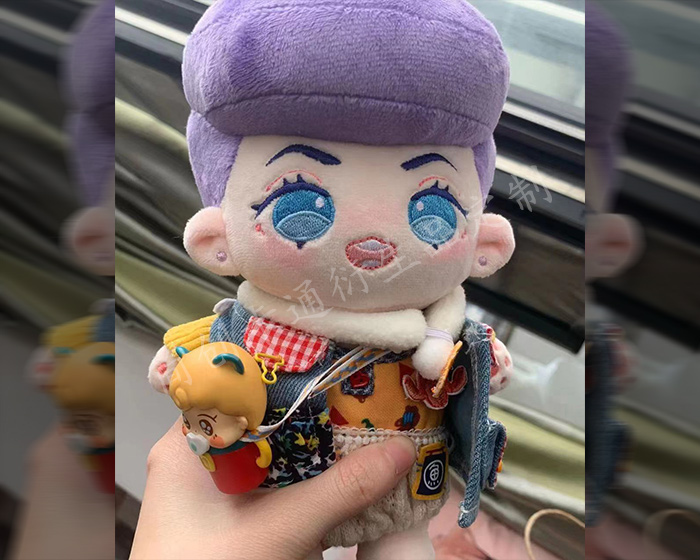stuffed animals hold a special place in many hearts, serving as comforting companions for children and adults alike. Over time, these cherished toys can accumulate dirt, allergens, and odors, making regular cleaning essential. However, washing stuffed animals requires care to avoid damage. Here’s a guide on how to effectively clean them without ruining their soft fabric and stuffing.
1. Check the Care Label
Before washing, always examine the care label attached to the stuffed animal. This label provides specific instructions regarding washing methods, temperature, and drying options. Some toys may require gentle hand washing, while others can be safely machine washed. Adhering to these guidelines is crucial for maintaining the toy’s integrity.
2. Spot Clean When Possible
For minor stains or dirt, consider spot cleaning instead of full washing. Use a mild detergent mixed with water and a soft cloth or sponge. Gently dab the stained area, avoiding excessive moisture, which can lead to mold or damage. This method is particularly useful for delicate toys or those with electronic components.
3. Prepare for Machine Washing
If machine washing is permitted, take the following precautions to protect your stuffed animal:
-
Use a Laundry Bag: Place the stuffed animal inside a mesh laundry bag to shield it from friction and tangling during the wash cycle.
-
Choose a Gentle Cycle: Select the gentle cycle on your washing machine and use cold water to prevent shrinking or fading. Hot water can damage the fabric and stuffing.
-
Use Mild Detergent: Opt for a gentle, non-toxic detergent that won’t irritate sensitive skin or degrade the toy’s material.
4. Drying Methods
Proper drying is essential to prevent mold and maintain the shape of the stuffed animal. Here are some tips:
-
Tumble Dry: If the care label allows, you can tumble dry on low heat. Adding dryer balls can help fluff the toy and ensure even drying.
-
Air Dry: For toys that require special care, air drying is often the safest option. Lay the stuffed animal flat on a clean, dry towel in a well-ventilated area, avoiding direct sunlight, which can cause fading.
-
Check for Dampness: Ensure the toy is completely dry before storing it away. Any remaining moisture can lead to mold growth.
5. Refluffing and Reshaping
After washing and drying, stuffed animals may lose their original shape or fluffiness. To restore them, gently shake or fluff the toy by hand. For those with fur, using a soft brush can help revive its appearance. If the toy is too squished, a quick tumble in the dryer with a few clean tennis balls can help restore its volume.
6. Regular Maintenance
To minimize the need for deep cleaning, perform regular maintenance. Vacuuming the stuffed animal with an upholstery attachment can remove surface dust and allergens without the need for washing. Additionally, keeping stuffed animals in clean, dry areas reduces the accumulation of dirt and grime.
Conclusion
Washing stuffed animals doesn’t have to be a daunting task. By following these steps—checking care labels, spot cleaning, preparing for machine washing, and ensuring proper drying—you can effectively clean your cherished toys without ruining them. Regular maintenance will keep them looking fresh and prolong their lifespan, ensuring they continue to provide comfort and joy for years to come.
The following are some examples of plush toys that our factory customizes for customers. Check out if there is one that you like best.
-
Custom Animal Plush
-
Cute Plush Doll
-
Custom Stuffed Animals
-
Plush Toy
-
Plush Dolls
-
Custom Stuffed Dolls
-
Custom Plush Toy
-
Cotton Dolls
-
Weighted Plush Toys
-
Cute Stuffed Animals
-
Custom Pet Stuffed Animal
-
Warmies Stuffed Animals
-
Weighted Stuffed Animal
-
Soft Toys
-
Plush Stuffed Doll
-
Custom Stuffed Dolls
-
Plush Maker
-
Bear Stuffed Toy
-
Anime Plush
-
Custom Stuffed Animal
-
Anime Plush
-
Custom Plush Toy
-
Personalised Stuffed Animal
-
Plush Animal Toys
-
Custom Plush Makers
-
Custom Plushies
-
Toy Manufacturer
-
Rag Doll Making
-
Custom Toys
-
Dog Plush Toys
-
Custom Rag Doll
-
Stuffed Animals
-
Custom Plush
-
Custom Plush Dolls
-
20cm Cotton Doll
-
Jojo Plush
-
Custom Doll
-
Jojo Doll
-
Large Plush Toys
-
15cm Cotton Doll
-
Dumpling Plush
-
Cotton Doll


























